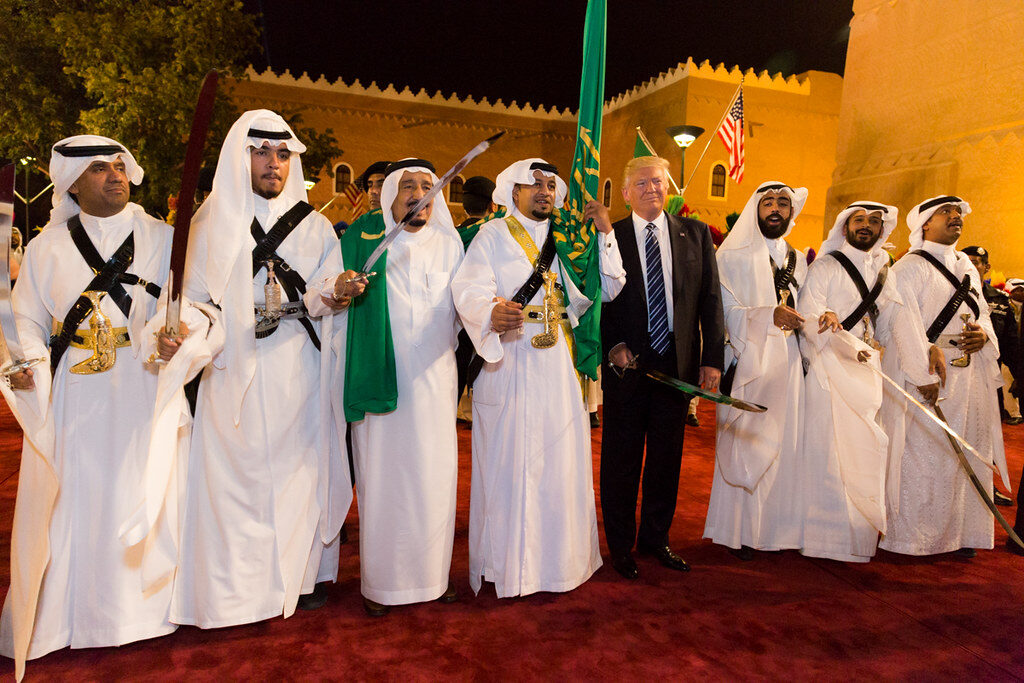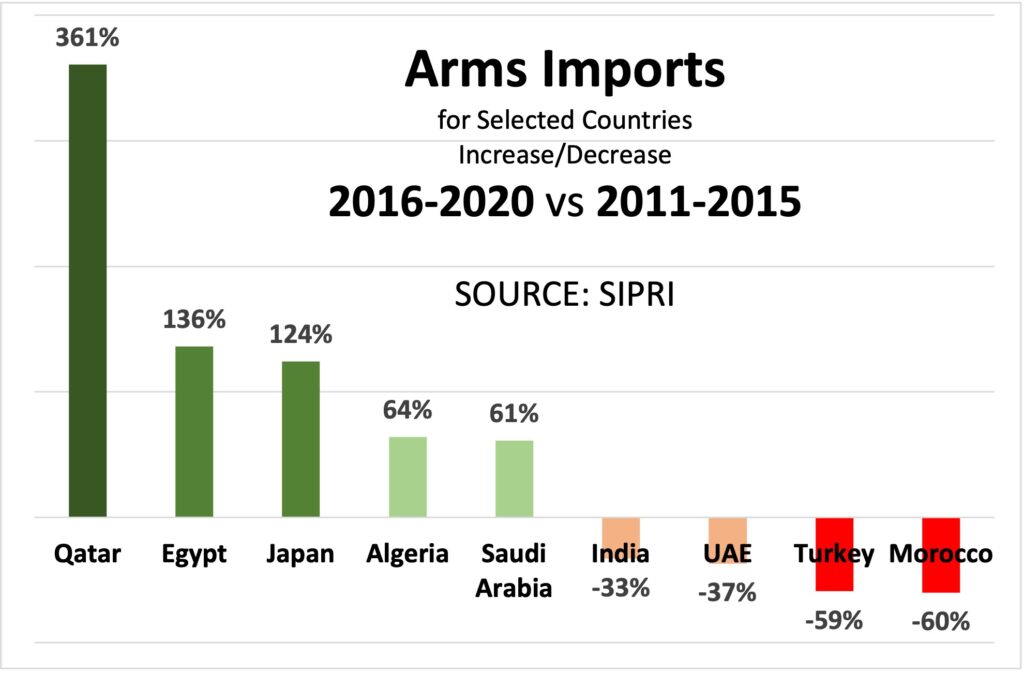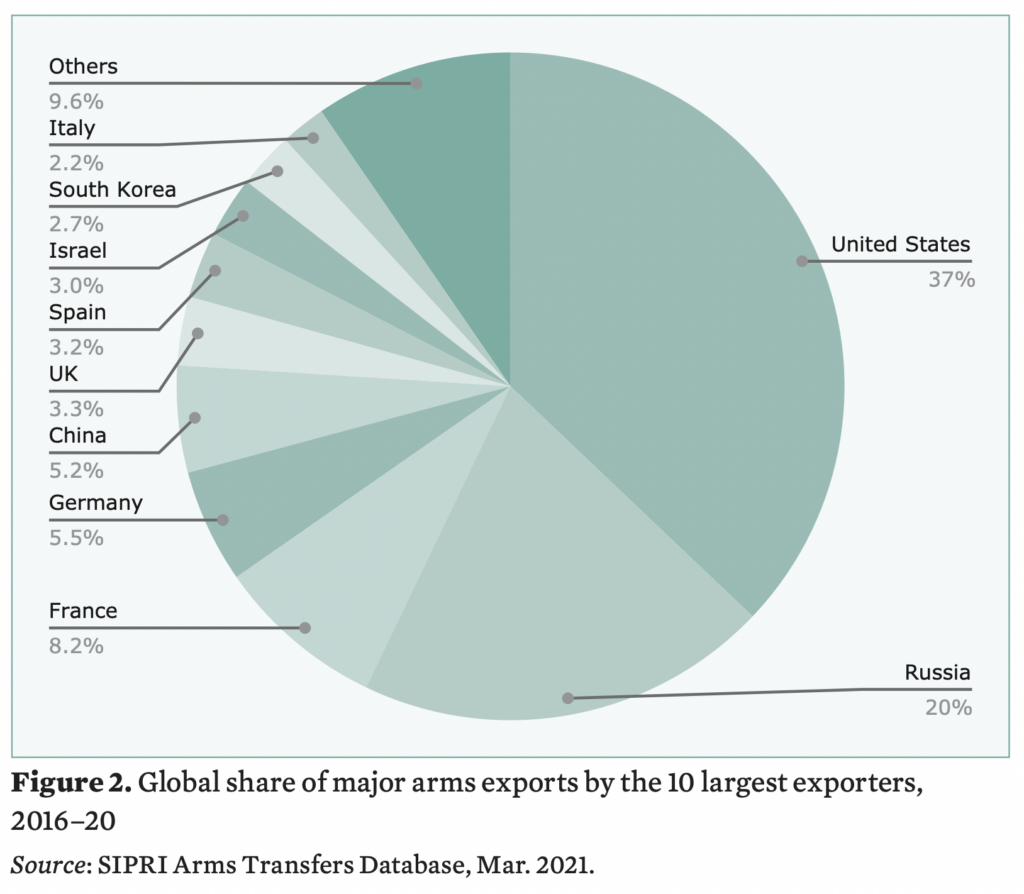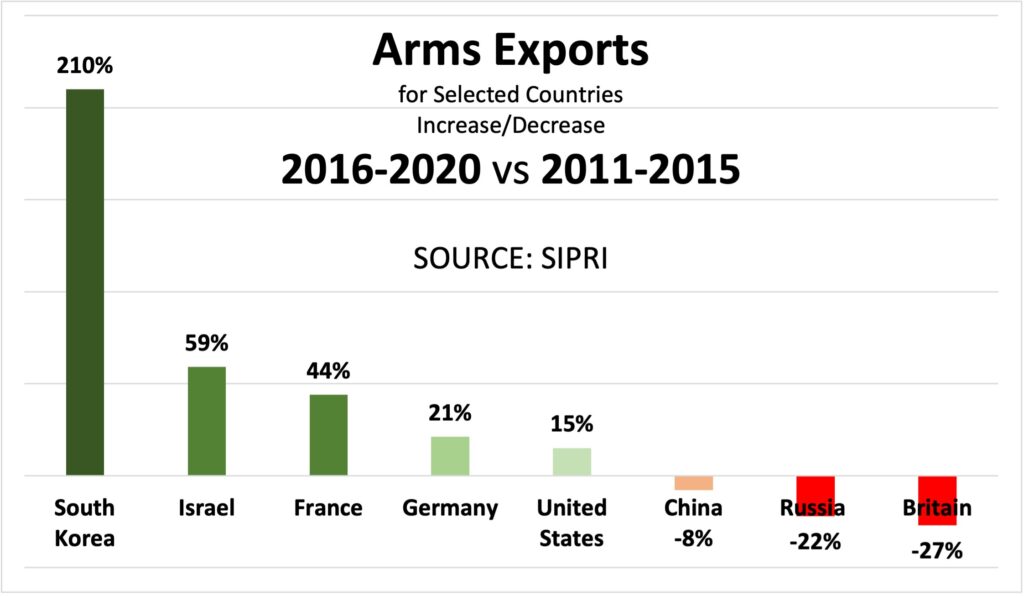
President Donald Trump with ceremonial swordsmen at Murabba Palace, as the guest of King Salman bin Abdulaziz Al Saud of Saudi Arabia.
WASHINTON: Israeli sources say Russia is moving to try and fill any potential gaps in Mideast arms sales left by President Biden’s pause on major sales to the United Arab Emirates and Saudi Arabia. The Biden administration’s emphasis on human rights and collateral damage, after four years of the Trump Administration’s unrelenting push for bigger deals, could impact the long American dominance in the regional arms bazaar, for good or ill.
Earlier this month, Moscow’s Foreign Minister, Sergey Lavrov, made a four-day visit to the Gulf States, meeting with heads of state in both Saudi Arabia and the UAE, as well as Qatar. Israeli sources say the timing was perfect to push for Russian arms sales and to signal that, while the US begins talking about thinning its footprint in the region, Russia remains heavily committed – including militarily, in Syria – and wants to play a major role in mediating between Iran and its Gulf State adversaries.

Breaking Defense graphic from Stockholm International Peace Research Institute (SIPRI) data
Coincidentally, just after Lavrov’s whirlwind tour, the Stockholm International Peace Research Institute issued an unusual long-term look at trends in arms sales over the last ten years. SIPRI delved deep into its authoritative database and compared the period 2011-2015, the last four years of the Obama administration – with the period 2016-2020 – the Trump years. Worldwide, arms sales in aggregate stayed roughly flat, but countries’ shares of total imports and exports shifted significantly, in some cases dramatically – driven not just by policy in Washington but by regional trends and tensions.
Under trump, arms imports by government’s in the Middle East grew 25 percent while sales to other regions of the world declined, with some individual countries reporting staggering growth: 61 percent for Saudi Arabia, 136 percent for Egypt, 361 percent for Qatar. (By contrast, Turkish imports plunged 59 percent, driven in large part by its Trump-era explosion from the F-35 program). So dominant are Mideastern buyers overall that they collectively account for almost half – 47 percent – of all US arms sales.

SOURCE: Stockholm International Peace Research Institute
The USA remained the world’s No. 1 arms exporter but grew even more dominant, with sales growing 15 percent, from just under a third of the global market during 2011-2015 to 37 percent of it in 2016-2020. Other US allies grew their sales by much larger percentages, although they remained much smaller in absolute terms: Germany’s arms sales rose 21 percent to 5.5 percent of the global total, France’s rose 44 percent to 8.2 percent of the global total, Israel’s rose 59 percent to 3.0 percent of the global total, and South Korea’s rose a staggering 210 percent, but still to only 2.7 percent of the global total.
Meanwhile sales by America’s great-power adversaries slipped: China’s arms exports fell by 7.8 percent by just over 5 percent of the global total, Russia’s by a whopping 22 percent to 20 percent of the global total. (China also remains a major importer of Russian tech, particularly jet engines). In Russia’s case particularly, the issue was a steep decline in sales to India – although the US lost sales as well – driven by the notoriously neutral nation’s desire for self-sufficiency in arms and its infamously bureaucratic procurement process. Russia did gain sales in the rapidly growing Mideastern market, but not enough to offset its losses in India. Israel, for its part, has increased its sales with India and its co-developing some weapons programs like the ship-launched Barak-8 missile.

Breaking Defense graphic from Stockholm International Peace Research Institute (SIPRI) data
Tal Inbar, an Israeli military analyst, told Breaking Defense that most of the Russian weapon systems are not combat-proven the way US alternatives are. “If we look at their military aircraft,” both manned and unmanned, “it is obvious that they have not reached the level of the American ones,” he said. “The only clear advantage they achieved is in the development of hypersonic missiles, but these are not in the Gulf states shopping list.”
But, Inbar added, Russia offers its weapons for much lower prices than the US does, in part because things are often cheaper to make in Russia, in part as a strategic ploy to strengthen relations. “Weapon sales to different countries give the Russians a much stronger foot hold in these countries, in the form of ports , air fields and other infrastructure projects,” he said.
Iran says it shot down Israel’s attack. Here’s what air defense systems it might have used.
Tehran has been increasingly public about its air defense capabilities, including showing off models of systems at a recent international defense expo.


























